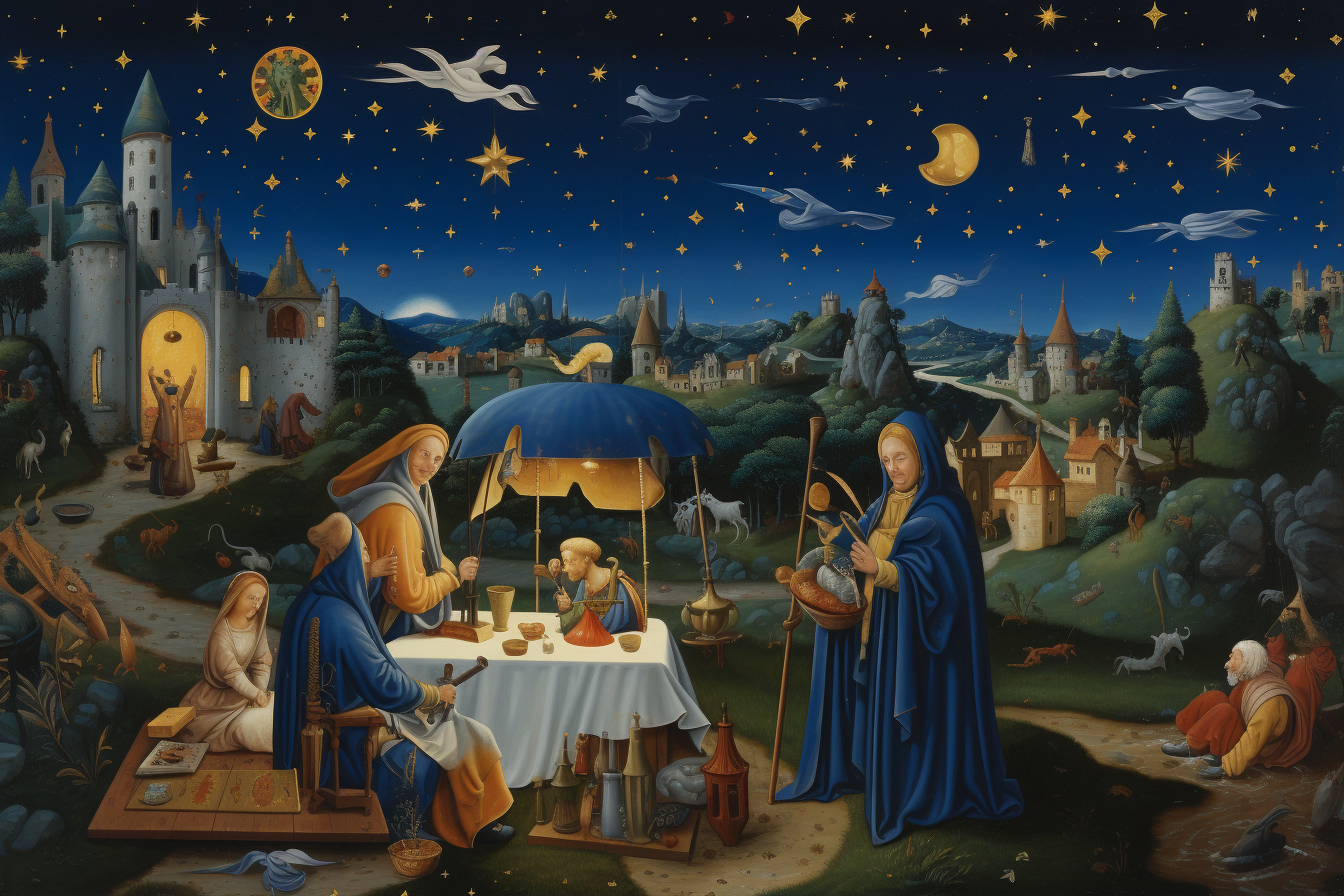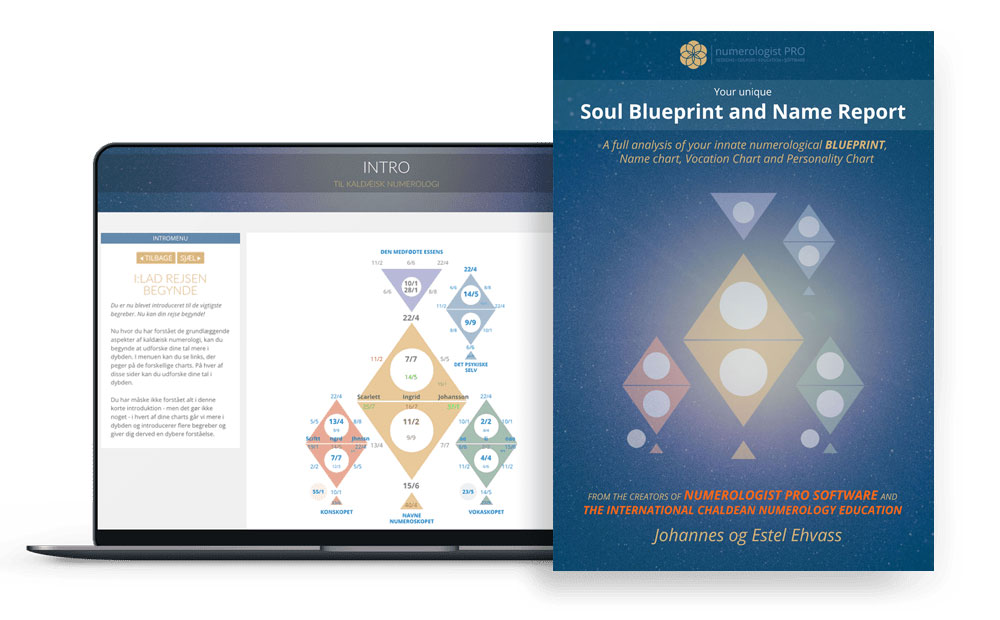Medieval Medicine

Johannes Ehvass
Welcome, dear reader! Together, we embark on a captivating journey into astrology, a timeless art and science that has accompanied humanity since its earliest days. Each astrological discovery not only mirrors the era and culture it emerged from but also feels like a celestial gift, as if the universe is directly speaking to us. Through these articles, I share with you the profound journey of how astrology has grown and evolved alongside us. Let's explore this cosmic connection that has, for millennia, enriched our understanding of ourselves and the universe around us.
Astrology in Medieval Medicine

In the medieval way of life, the worlds of the mystical and the practical often intertwined. One domain where this interplay was most evident was medicine.
Medieval medicine, though grounded in the tangible aspects of herbs and treatments, frequently looked to the stars for guidance, integrating astrological concepts into its fabric.
This article delves deep into the symbiotic relationship between medieval medicine and astrology, focusing on the humoral theory, timing treatments by the stars, and the role of talismans and amulets in healing.
The Humors, Temperament, and the Zodiac
Central to medieval medicine was the theory of the four humors. Originating from ancient Greece, particularly from the teachings of Hippocrates and Galen, this theory suggested that the human body was composed of four primary fluids or ‘humors’ – blood, phlegm, yellow bile, and black bile. Each humor was associated with specific qualities, elements, and even astrological signs, and the balance (or imbalance) of these humors determined an individual’s health and temperament.
The Four Humors and Their Correspondences
- Blood: Warm and moist. Linked to the element of Air and signs Gemini, Libra, and Aquarius. A predominance led to a sanguine temperament, characterized by optimism, liveliness, and a social disposition.
- Phlegm: Cold and moist. Tied to the element of Water and signs Cancer, Scorpio, and Pisces. A dominance resulted in a phlegmatic temperament – calm, thoughtful, and often reserved.
- Yellow Bile: Warm and dry. Associated with the element of Fire and signs Aries, Leo, and Sagittarius. Its abundance fostered a choleric temperament, manifesting as ambition, energy, and sometimes aggression.
- Black Bile: Cold and dry. Connected to the element of Earth and signs Taurus, Virgo, and Capricorn. An excess led to a melancholic disposition, marked by introspection, pensiveness, and occasional despondency.
Astrological Influences on Humoral Imbalances
Medieval physicians believed that planetary movements and phases could influence the balance of humors in the body. For instance, Mars, a fiery planet, might exacerbate yellow bile, leading to fevers or inflammatory conditions. Conversely, the cooling influence of the Moon might increase phlegmatic conditions, resulting in colds or lethargy.
Understanding these connections, doctors would often consult astrological charts to diagnose imbalances and prescribe remedies tailored to the patient’s unique astrological and humoral profile.
Example 1: A Doctor Treats A Man With Too Much Yellow Bile
As the early morning light streamed through the stained glass of my study, I heard the shuffling of feet outside my door. My apprentice ushered in a middle-aged man, his face flush with the kind of feverish color that spoke of internal fires burning too brightly.
“Master,” my apprentice began, “this gentleman has been suffering from relentless bouts of fever and an irritability that keeps his household on edge.”
Nodding, I gestured for the man to sit. As he recounted his symptoms—persistent fevers, a short temper, and an unquenchable thirst—I considered the humoral imbalance at play. His symptoms were classic signs of an excess of yellow bile, indicative of a choleric temperament inflamed past its natural bounds.
I pulled out an astrolabe and began to calculate. Mars was indeed prominent in the sky, its fiery influence no doubt exacerbating the man’s condition. To confirm my diagnosis, I asked for the date of his birth to cast his natal chart.
The chart revealed what I had suspected: Mars, in a dominant position, was in a challenging aspect with his natal Sun in Aries. The warrior planet’s heat was too much for his constitution, and with the Sun also in a fire sign, there was an overabundance of the warm and dry qualities that stoke yellow bile.
“And then, sir, because your yellow bile is in excess, likely aggravated by the current position of Mars,” I explained, “we must cool and moisten. I will prepare a concoction of cucumber and lettuce juices to refresh your system. Also, a tincture made from roses and violets, mixed with a bit of lemongrass, will help to temper the heat.”
I noted his surprise at the mention of flowers and herbs more commonly found in a garden than a medicine cabinet. “These plants are ruled by Venus and the Moon,” I added, “both of which are cool and moist in nature, offering a counterbalance to the fiery Mars that currently afflicts you.”
Furthermore, I advised him to avoid foods that were hot and dry, such as spicy meats and red wine, which would only feed the flames of his current disposition. Instead, I recommended barley water and fruits like melons and pears to soothe his heated bile.
Lastly, I suggested he seek the tranquility of shade and cool waters, to bathe in a stream if he could, for the element of Water would help balance the Fire that raged within.
The man left with a collection of remedies and instructions, a hopeful look replacing the feverish desperation in his eyes. As a physician guided by the stars, it was not only my duty to heal the body but also to restore harmony with the cosmos. The delicate dance of humors and planets was a constant challenge, but one that I, like my forebears Hippocrates and Galen, accepted with pride.
Example 2: A Doctor Treats A Woman With Too Much Black Bile
The tolling of the cathedral bells marked the noon hour as my apprentice ushered in a woman of gentle countenance, her skin as pale as the freshly fallen snow outside my window. She moved with a sluggish grace, her eyes rimmed with the shadow of sleepless nights.
“Master,” my apprentice whispered, “the lady has been plagued by a deep melancholy, an unshakeable chill, and a weariness that keeps her confined to her bed.”
As she took a seat by the warmth of the hearth, I observed her demeanor—a pervasive lethargy, a complexion bordering on sallow, and a gaze that seemed to look inward rather than at the world around her. These were the hallmarks of an excess of black bile, leading to a melancholic temperament that had become pathological.
I reached for her hand, feeling the coolness of her skin, and noted the slow, almost imperceptible pulse that spoke of a sluggishness in her bodily humors. To confirm my suspicions, I inquired about her menstrual cycle, which she described as scant and infrequent—a further indication that cold and dry black bile was dominant.
I cast her natal chart with the information she provided, her birth occurring under the sign of Virgo. Saturn, the planet associated with the melancholic humor, loomed heavy in her chart, and at present, it made a challenging aspect to her natal Moon, exacerbating her condition.
“And so, my lady,” I began, with a reassuring tone, “your black bile has overpowered the other humors, and we must seek to warm and invigorate your body, to dispel the coldness that Saturn inflicts upon you.”
I instructed my apprentice to prepare a draft of warm wine infused with fennel and St. John’s wort—herbs ruled by the Sun, to bring warmth and vitality. A broth of chicken, seasoned with ginger and a hint of cayenne, would also help to stoke the fires within her.
“For your spirit and your body’s warmth,” I told her, “you shall carry a sachet of rosemary and bay leaves, both under the dominion of the Sun, and place it beneath your pillow to ward off the chill and darkness that haunts your nights.”
I advised her to engage in gentle exercise, to walk in the midday sun when its rays were strongest, for the Sun’s light would pierce the gloom that clung to her. Music, too, I prescribed, for the celestial harmony of lute or lyre could lift the spirits where words failed.
Finally, I counseled patience, for the dance of the planets moved at its own pace, and the humors within would follow in time. I reassured her that with careful adherence to these remedies, balance would be restored, and the melancholy that weighed upon her would lift, like the morning fog yields to the promise of the day.
As she departed, a flicker of hope seemed to ignite in her eyes, a subtle warmth that had been absent upon her arrival. In the pursuit of healing, one must address not only the physical but also the celestial, for both body and soul are intimately entwined with the greater cosmos.
The details mentioned, such as the emphasis on balancing the four humors, the use of an astrolabe to calculate planetary positions, the casting of a natal chart, and the prescription of dietary adjustments and herbal remedies based on the astrological and humoral diagnosis, were indeed part of the medieval astrologer-physician’s toolkit.
Physicians like Hildegard of Bingen, Paracelsus, and even the polymath Avicenna integrated astrological knowledge into their medical practices. They would have considered the positions of the planets and the zodiac signs to understand the patient’s condition and to prescribe treatments.
However, the specific dialogue and the exact remedies would vary from one physician to another, and not all medical practitioners used astrology as part of their practice. Additionally, records of such consultations are limited, so while the essence of the described consultation is historically plausible, the exact narrative is a reconstructed account meant to illustrate how these practices might have been carried out.
Timing Medical Treatments by the Stars
Just as the timing of planting crops or embarking on journeys was influenced by the stars, so too was the administration of medical treatments. The belief was that certain astrological configurations were propitious for particular treatments, while others could be detrimental.
Planetary Hours and Days
The medieval world divided the day into 24 hours, assigning each hour to a specific planet. These ‘planetary hours’ were believed to carry the energy of their respective planets, making them auspicious times for related activities. For instance, surgeries might be scheduled during hours ruled by Mars, given its association with cutting and energy, whereas treatments for emotional ailments might be best undertaken during Venusian hours, leveraging the planet’s calming and harmonizing energies.
Lunar Phases and Medical Procedures
The Moon’s phases were especially influential in determining the timing of medical treatments. Many doctors believed that the waxing moon increased the flow of humors, making it an ideal time for purging or bloodletting, while the waning moon was seen as a time of contraction and retention, suitable for restorative and nourishing treatments.
Talismans, Amulets, and Astrological Remedies
Beyond herbs and physical treatments, medieval medicine often employed the metaphysical powers of talismans, amulets, and other astrological remedies. These objects, infused with astrological energy, were thought to offer protection, healing, and balance to their wearers.
The Crafting of Talismans
Talismans were typically created during specific astrological configurations to harness the desired planetary energies. An amulet designed for healing might be crafted during a favorable Venus or Jupiter alignment, drawing upon their benevolent and harmonizing qualities. The material, design, and even the inscriptions on the talisman were carefully chosen to resonate with its intended astrological influence.
Amulets for Protection
While talismans were primarily crafted for their positive, proactive energies, amulets were often designed as protective shields, warding off negative influences, be they disease, malevolent spirits, or harmful astrological configurations. They were frequently worn around the neck, providing a continuous barrier against potential harm.
Gemstone Remedies and Their Astrological Correspondences
Gemstones, with their natural vibrancy and energy, were another tool in the medieval doctor’s kit. Different stones were believed to resonate with different planets and signs. For example, the sun-bright amber might be used to strengthen the heart and lift spirits, resonating with the Sun’s vitality, while moonstone, with its ethereal sheen, might be prescribed for menstrual or emotional imbalances, aligning with the Moon’s watery, receptive energy.
In conclusion, astrology in medieval medicine was not a fringe or esoteric practice but a central pillar in the holistic approach to health and well-being. By understanding and harnessing the interplay between the heavens and the human body, medieval physicians sought to provide comprehensive care, addressing not only the physical but also the spiritual and cosmic dimensions of illness and healing.

Johannes & Estel: Renowned authorities in Numerology, Astrology, and the esoteric arts. As the founders of Scandinavia's premier Numerology school, we're delighted to share our insights through this curated series on astrology. Dive in and discover the stars.
The Worlds Most Advanced Numerology Report

Your birthdate reveals your unique life purpose, potentials, talents, weaknesses, and karma in this life.
Your names show what you attract into your life regarding your career, relationships, happiness, money, and success.
GET THE REPORT HERE
Introduction to Astrology
The history of Astrology
Moving beyond deterministic astrology
Foundation of Astrology: Planets, Signs and Houses
Astrology and the Holographic Universe
The Holographic Universe
The Human Psyche as a Mirror to The Solar System
The Human Body as a Mirror to The Star Signs
Astrology Background
Egyptian Astrology
Mayan Astrology
Chinese Astrology
Indian Astrology - Jyotish
Celtic Astrology
Tibetan Astrology
Mesopotamian Astrology
Early Mesopotamian Astrology: The Dawn of Celestial Divination
Enuma Anu Enlil: The Epicenter of Babylonian Celestial Omen Interpretation
Babylonian and Chaldean Astrology
Babylonian and Chaldean Astrology
Chaldean influence and evolution
Chaldean Wisdom: Safeguarding and Transmitting Astrological Knowledge
Hellenistic Astrology
Hellenistic Astrology background
Claudius Ptolemy and Tetrabiblos
Vettius Valens
Dorotheus of Sidon
Persian Astrology
Persian Astrology background
Sassanian Astrology
Late Antiquity and The Transition Period
Late Antiquity and The Transition Period
Hellenistic to Islamic Transition: The Torchbearers of Astrological Wisdom
Islamic Golden Age
Arabian Astrology Background
Arabian Astrology Contributions
Medieval Astrology
Introduction: The Medieval Cosmos
Monastic Preservers: Astrological Knowledge in the Dark Ages
Astrology in Medieval Medicine
Kings, Queens, and Constellations: Astrology in the Medieval Court
The Church and the Stars: A Contentious Relationship
Universities and Scholastic Pursuits: Academic Astrology
Astronomy & Astrology: Tools of the Trade
Medieval Astrological Houses and the Synthesis of Traditions
Transition to the Renaissance: Humanism and the Celestial Arts
Reflections: Medieval Astrology's Echoes in Modern Practice
Astrological Art of the Middle Ages
Famous Medieval Astrologers
Medieval Astrological Texts
Renaissance Astrology
Renaissance Humanism and Astrology
Scientific Advancements and Astrology
The Social Fabric: Astrology in Everyday Renaissance Life
Court Astrologers of the Renaissance
Controversies and Conflicts: Astrology Under Scrutiny
Renaissance Texts and Authors: Continuation of a Tradition
Astrology and Art: Celestial Imagery in the Renaissance
Renaissance Astrological Practices: Evolutions and Innovations
End of the Renaissance: The Gradual Decline of Astrological Influence
Renaissance Astrology's Echo in the Modern World
Enlightenment Astrology
Introduction: The Enlightenment and Astrology
Challenging the Stars: Astrology's Critics during the Enlightenment
Astrology and the New World
Astrology in the 19th Century
The Dawn of Psychological Astrology
Astrology in the 20th Century: A Modern Renaissance
Astrological Associations and Schools
Modern Controversies and Astrology
Astrology and Popular Culture
Astrology and Technology
Current Trends and Future Directions in Astrology
Conclusion: Reflecting on Astrology's Evolution
The Planet Significances
The Sun in Astrology
The Moon in Astrology
Mercury in Astrology
Venus in Astrology
Mars in Astrology
Jupiter in Astrology
Saturn in Astrology
Uranus in Astrology
Neptune in Astrology
Pluto in Astrology
Chiron in Astrology
Black Moon Lilith in Astrology
Pars Fortuna in Astrology
Ceres in Astrology
Houses in Astrology
Introduction to Astrological Houses
The Angular Houses
The Succedent Houses
The Cadent Houses
The 1st House
The 2nd House
The 3rd House
The 4th House
The 5th House
The 6th House
The 7th House
The 8th House
The 9th House
The 10th House
The 11th House
The 12th House
Interaction Between Houses
Derived Houses, House Rulers, and Interceptions
Conclusion: Synthesizing House Knowledge
All Materials © 2023 & 2024 Numerologist PRO
Terms of Service: Information provided by Numerologist PRO and/or from this web site is not intended as advice (medical, psychological, financial or other), nor is it intended to replace your work with a qualified professional (medical or otherwise). You should maintain your relationship with your providers and consider the services of this site as informational only. Any information, stories, examples, or testimonials presented on this website do not constitute a warranty, guarantee, or prediction regarding the outcome of an individual. This web site is a sharing of knowledge and information of numerology/energy work based on the experiences of Numerologist PRO. You are encouraged to make your own decisions based on your own research and inner guidance. By booking and receiving services, you agree to fully release and hold harmless Numerologist PRO and all it's affiliated numerologists from and against any liability or claim that may arise out of or in connection with their service(s).
Numerologist PRO © 2021

CONTACT
numerologist@numerologistpro.com
LIKE US, and get free numerology tools, info about your personal numbers, best business dates of the year - and more!
YOUR FREE NUMEROSCOPE CHART
Enter your name and email below and get access to our free online numerology chart tool.